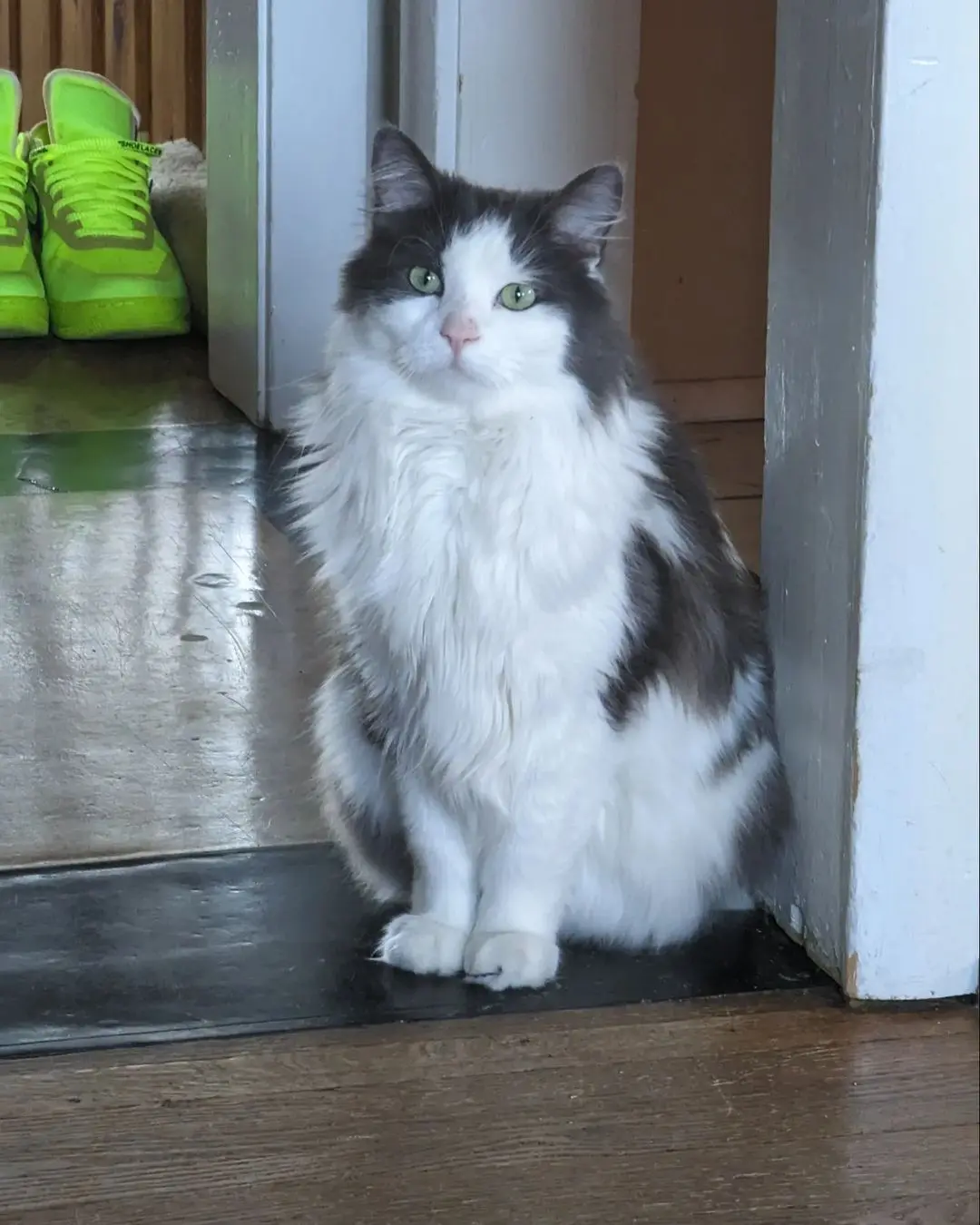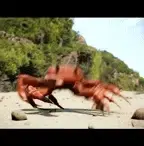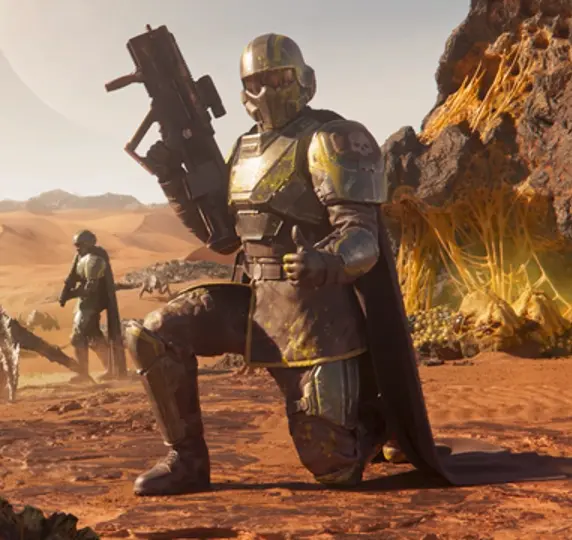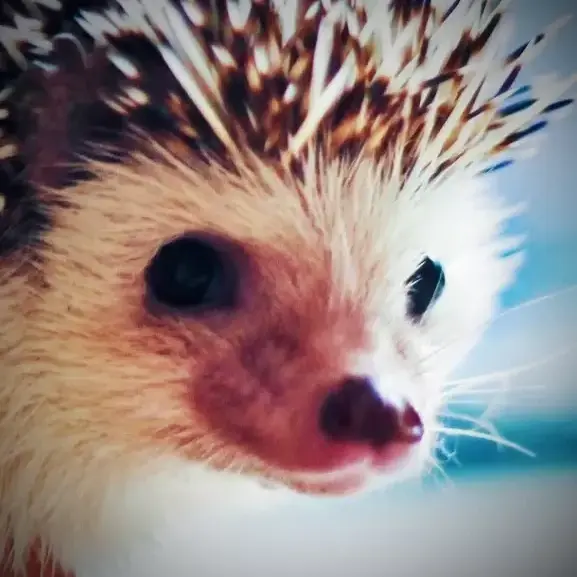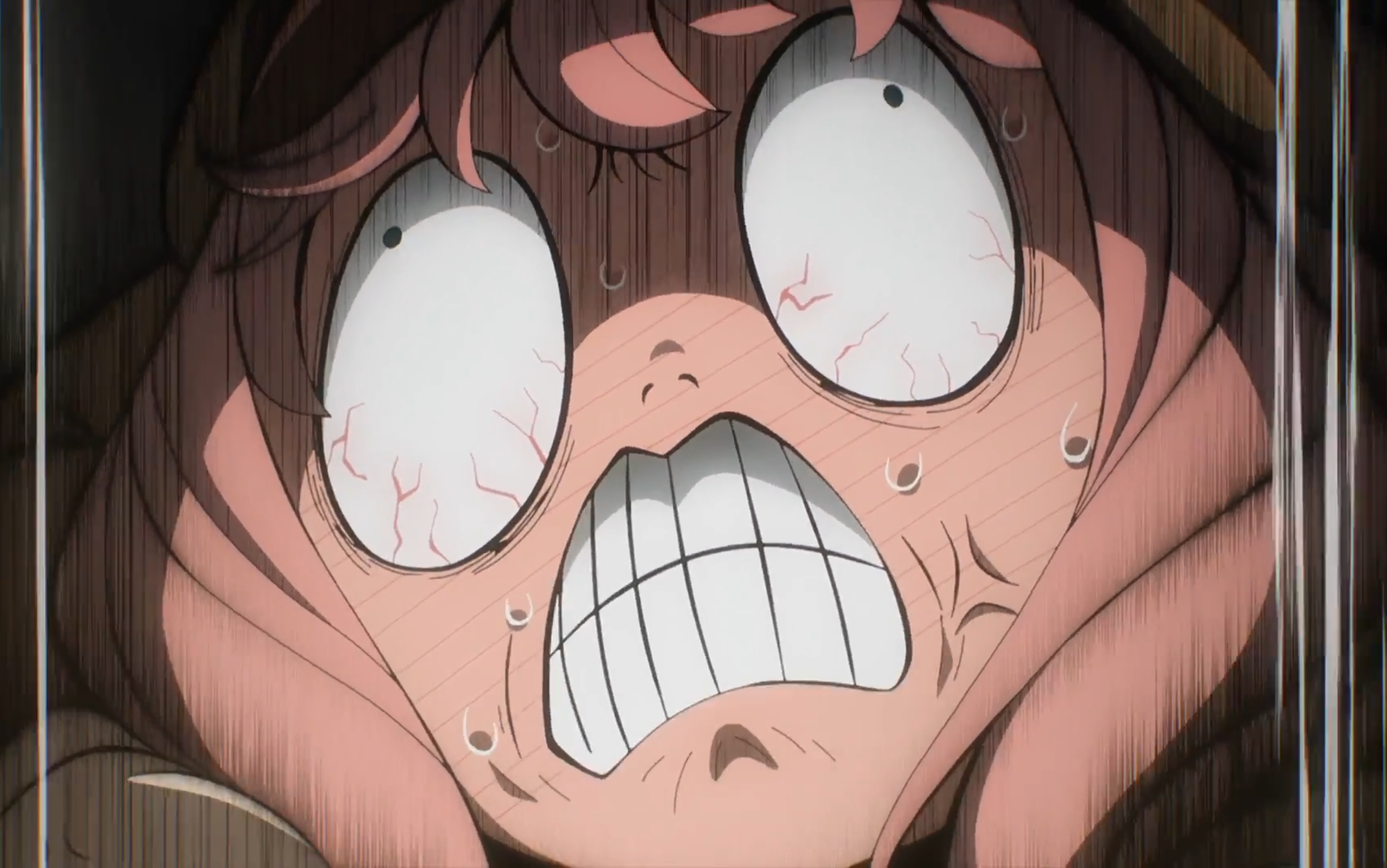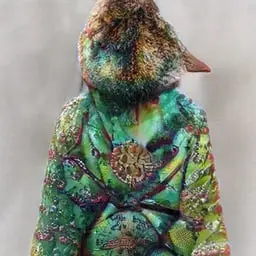Y’all cat is broken. Mine will sit on my lap and purr uncontrollably, emitting dopamine-releasing frequency. They know how to control us, always 4 step ahead.
Exactly. I provide food, shelter, catbox cleaning, pets, toys, scratching posts, etc.
They provide a soft rumbling sound.
It’s a fair trade.
They provide a soft rumbling sound.
And occasionally show you their impression of dough-making, and loaves of bread.

It hurts so good.
Also, should they be in a mood to be touched, unimaginable softness.
My cat wanders around hissing at anything that moves and threatens the family all day. She’s a devil, except for when she isn’t. That’s at the same time every day, first thing in the morning. She gets on my lap and gives me love and won’t leave me alone or stop following me. Around 10:00 though, every morning, she’s right back to contemplating the murder of every other living thing in the house.
mine can’t purr and does a weird heavy breathing thing instead. it’s OK though I still get the dopamine
In return you may be allowed and/or obliged to give scritches.
She looks delicious!
Mouth watering even
Who let JD Vance onto Lemmy?
What you don’t like curling up on a good couch and eating some cat wings? Chicken of the litterbox
Damn Haitians.
She probably does contemplate how she’d kill and eat you if you were smaller
Alright, well, this is going to seem a bit eccentric, but let’s start by considering two evolutionary marvels: the cat and the lobster. At first glance, these two creatures couldn’t appear more dissimilar. The cat, a sleek, agile mammal, domesticated yet retaining its predatory instincts, and the lobster, a hard-shelled, ancient crustacean, inhabiting the murky depths of the ocean, navigating its world with antennae and claws. Yet, if we examine them closely, what emerges are profound—though perhaps subtle—similarities in their evolutionary development, in their strategies for survival, and, yes, in the curious role that claws and paws play in shaping their interactions with the world.
Now, let me introduce you to my cat. I call her Lobster. And you might think, “Well, that’s an odd name for a cat,” but I assure you, it’s not just an exercise in whimsy. You see, Lobster—my cat—has always displayed behaviors and characteristics that mirror the profound complexity of the actual lobster. This may seem tenuous, even strange, but when we look at how evolution has shaped these two creatures, we begin to see a convergence of function and form that goes deeper than we might initially realize.
First, let’s talk about the paws of the cat and the claws of the lobster. Superficially, they’re distinct, but functionally, there’s a connection, and this connection is crucial. The paw, in the case of my Lobster—my cat—is not just a tool for walking or grooming. It’s an instrument of precision, much like the lobster’s claw. Cats, with their retractable claws, can shift between softness and lethality with stunning grace. One moment, my Lobster—my cat—is lazily stretching on the windowsill, her paws softly resting on the fabric of the curtain, and the next, her claws are unsheathed, grasping a toy mouse with an almost violent precision.
Now, let’s consider the lobster’s claws. They too are instruments of precision—evolved to grasp, tear, and manipulate their environment. The lobster has two primary claws: the crusher and the cutter, each specialized for a specific task. One might think this is vastly different from the cat’s delicate paws, but again, we must look beyond the superficial. Just as a lobster alternates between its two claws depending on the situation—one for brute force, the other for finer, more delicate tasks—so too does the cat alternate between the soft pad of its paw and the sharp claws that lie hidden beneath, waiting for the moment to strike.
And here’s where it gets interesting. The evolutionary convergence between these two creatures—though separated by millions of years and vastly different environments—reveals a universal principle of adaptation: the balance between force and finesse. The lobster’s claws evolved to navigate the dangerous and competitive environment of the ocean floor, where survival is dictated by the ability to seize opportunity, quite literally, by the claw. My Lobster—my cat—operates under a similar principle. In her world, it’s all about agility, speed, and the ability to shift between calm observation and sudden, calculated action.
Now, here’s where I start to sound like I’m smarter than I probably am, but bear with me. When you look at evolution, you begin to see patterns. You see, evolution doesn’t just shape organisms randomly. It shapes them according to certain fundamental principles—principles of order, of adaptation to chaos. Both the lobster and the cat exist in environments that are fundamentally unpredictable, full of danger and opportunity. But evolution has equipped them with tools to navigate this chaos. The lobster uses its claws to assert dominance and survival, while the cat uses its paws to hunt, defend, and explore its territory.
But it’s not just about survival, is it? There’s a kind of grace here, a refinement that speaks to something deeper. Cats, like my Lobster, move with a kind of elegance, a mastery of their environment that’s almost artistic. And the same could be said of lobsters—though they may appear awkward, clambering along the seafloor, their movements are precisely calibrated. They don’t waste energy. Every motion, every use of their claws, is deliberate, focused on the task at hand. It’s almost as if both creatures are performing a kind of evolutionary ballet, each movement honed by millions of years of adaptation.
Now, what does this teach us? Well, it teaches us that the world is a place of immense complexity, and success in that world—whether you’re a lobster or a cat—depends on your ability to balance force and delicacy, to act with precision when necessary but also to adapt to the environment in a way that conserves energy and maximizes effectiveness. My Lobster—my cat—demonstrates this beautifully. She doesn’t just pounce on every toy that comes her way. No, she watches. She waits. And when the moment is right, she strikes with an efficiency that would make any lobster proud.
But there’s something more here, something philosophical. When we consider the evolutionary paths of these two creatures, we’re reminded that nature rewards not just strength but adaptability. The lobster has survived for over 350 million years because it has learned to adapt to its environment, just as the cat, a much more recent arrival on the evolutionary scene, has mastered its own domain. And what do they both rely on? A set of tools—claws and paws—that allow them to interact with the world in ways that are both subtle and forceful.
And this is where we, as humans, can learn a great deal. In our own lives, we must balance these same principles—force and finesse, action and contemplation. We must be like the lobster, knowing when to apply brute strength to overcome obstacles, and like the cat, understanding when to use precision and subtlety to navigate the challenges we face. My Lobster—my cat—reminds me of this every day, with her measured, deliberate movements, and her ability to shift from a state of calm repose to one of sudden action.
So, while it may seem strange to compare the evolution of the cat to the evolution of the lobster, there’s a deeper truth here. Evolution shapes creatures according to the demands of their environment, but it also instills within them a kind of wisdom—a wisdom that we, as humans, can observe, learn from, and apply to our own lives. Whether you have paws or claws, the key to survival—and to thriving—lies in mastering the balance between power and precision, in understanding when to strike and when to wait, and in recognizing that the tools you’ve been given are more than sufficient if you know how to use them.
In conclusion, my Lobster—my cat—may not live under the sea, but she embodies the same principles that have allowed lobsters to thrive for millions of years. And that, I think, is a lesson worth pondering.
Okay Dr. Peterson, let’s put you back into your coma.
I know it’s a joke, but Dr. Peterson has never said anything as profound as the root comment. He can definitely say some things that are as long winded as that comment, but his point would be about women being better off in the kitchen, or something about how pronouns are going to end civilization, or some garbage like that.
I was very disappointed that this didn’t end with “In nineteen ninety eight the undertaker threw mankind off hеll in a cell, and plummeted sixteen feet through an announcer’s table.”
My weekend has been ruined. :(
To the copypasta archive with you!
oh, she has thoughts.
she just knows sharing them isn’t in her best interest and this is working out better as it currently is.
when I saw the thumbnail I thought the cat had a blue wizard/witch’s hat for a sec
I feel so validated.
“I tolerate you human.”
No mind to think. No will to break.

